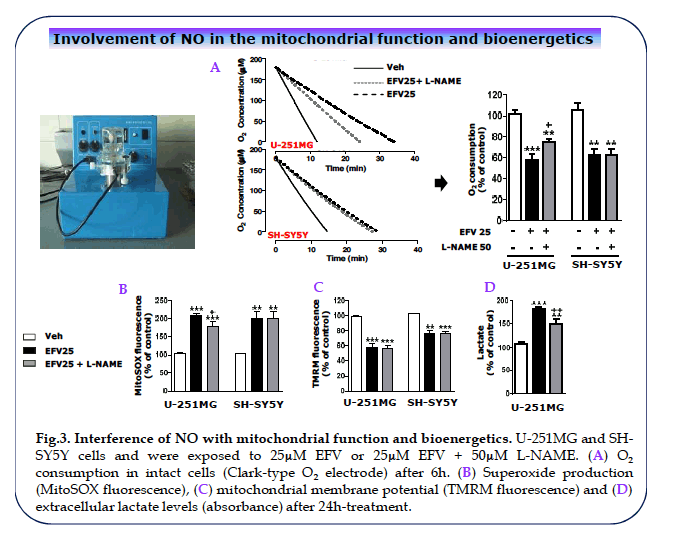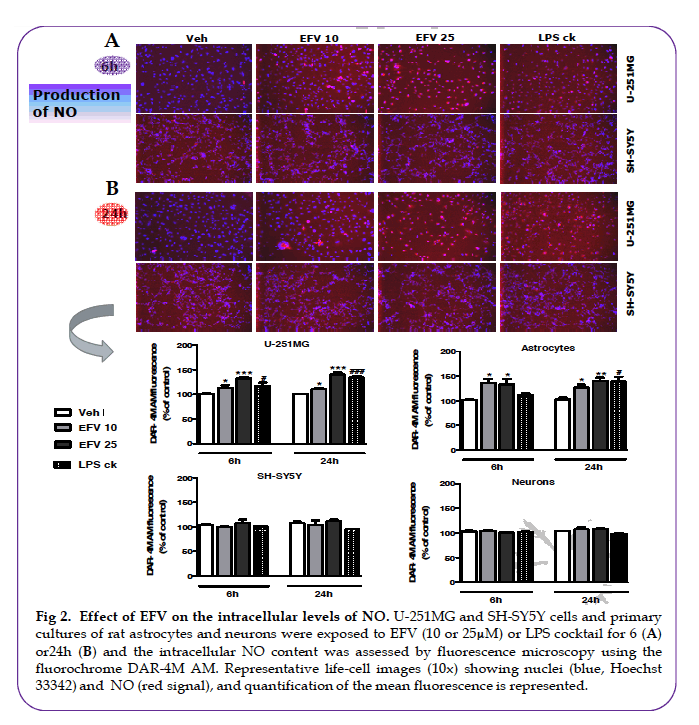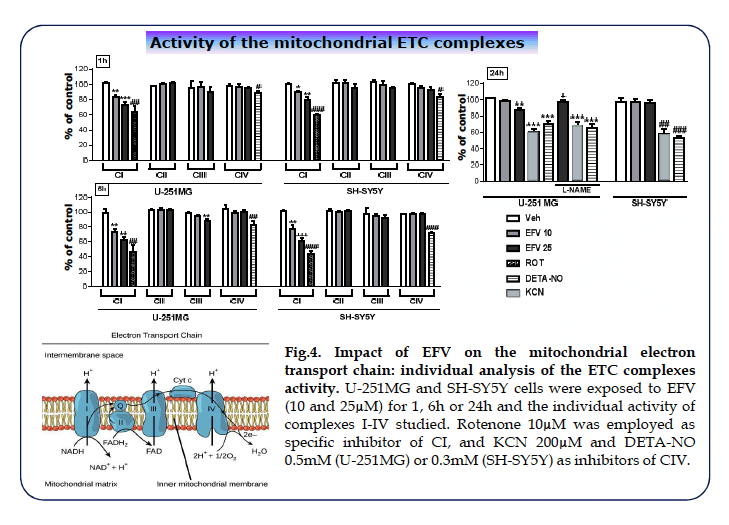| |
Efavirenz-Induced Nitric Oxide Affects Mitochondrial Function in Glial Cells
|
| |
| |
Download the PDF
http://www.natap.org/2012/HIV/100512_01.htm......"the effectiveness of brain penetrating cART regimens is currently in question (Koopmans et al., 2009).....there is also evidence that some antiretroviral drugs (ARVs) are toxic to neurons (Liner et al., 2010), and that ARVs with increased brain penetration are associated with poor cognitive performance (Tozzi et al., 2007; Marra et al., 2009).
....But even with anti-retroviral treatments, people infected with HIV have shortened lifespans and the chance of cognitive decline is high. It's nothing you should treat lightly.".....Haughey and his colleagues found that 8-hydroxyefavirenz is 10 times more toxic to brain cells than the drug itself and, even in low concentrations, causes damage to the dendritic spines of neurons. The dendritic spine is the information processing point of a neuron, where synapses - the structures that allow communication among brain cells - are located."
These findings contribute to our understanding of the mechanism for neurotoxicity associated with EFV therapy....."EFV is metabolized primarily by CYP2B6 to produce a series of metabolites of which 8-hydroxyefavirenz (8-OH-EFV) is the most abundant (Ward et al., 2003; Bumpus et al., 2006; Ogburn et al., 2010). In this study we provide evidence that 8-OH-EFV is a potent neurotoxin that dysregulates neuronal calcium homeostasis, and damages dendritic spines in the low nM range. The effects of this metabolite are distinct from the parent drug, and highlight the importance of screening not only antiretroviral medications for neurotoxicity, but also drug metabolites......These data suggest that the metabolism of EFV produces a highly neurotoxic metabolite (8-OH-EFV) that is capable of damaging neurites at very low concentration. Thus, cognitive impairments associated with EFV may involve synaptic damage mediated by its major metabolite 8-OH-EFV"
Reported by Jules Levin
CROI 2015
Haryes A. Funes1, Fernando Alegre2, Miriam Polo2, Ana Blas-García2, Juan V. Espluges3, Nadezda Apostolova4
1 Pharmacology , Universidad de Valencia, Valencia, Spain. 2 Pharmacology, Universidad de Valencia/FISABIO, Valencia, Spain. 3 Pharmacology, Universidad de Valencia/FISABIO/CIBERehd, Valencia, Spain. 4 Facultad de Ciencias de la Salud, Universidad Jaume I, Castellón, Valencia, Spain.





|
|
| |
| |
|
|
|